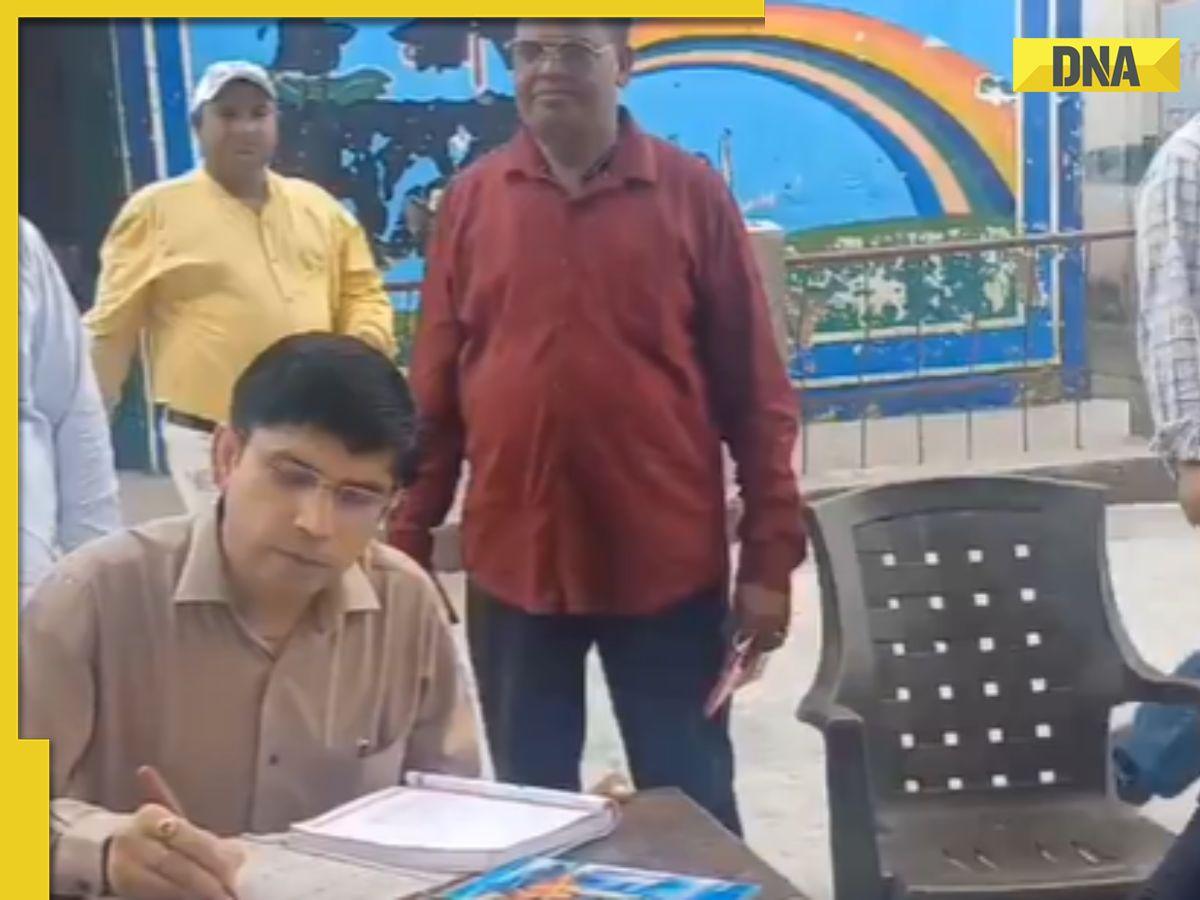
A surprise inspection of a government school in the Uttar Pradesh district of Sambhal has cast a revealing light on the prevailing problems plaguing the region’s education system. The inspection, spearheaded by District Magistrate (DM) Rajendra Pensia, uncovered a troubling trend among government school teachers—an alarming amount of time spent on mobile phones during work hours. The surprise visit was part of an initiative to ensure educational standards are being maintained. However, what unfolded was a revelation that demands immediate attention.
During the course of his inspection, DM Pensia made a shocking discovery that exposed the carelessness and lack of accountability among the educators. In one distressing instance, a teacher was found not just using his phone but engaged in playing a mobile game. DM Pensia took the unprecedented step of examining the teacher’s phone and found extensive usage, most notably, a staggering 1 hour and 17 minutes spent playing Candy Crush during the specific 5.30-hour work period. Additionally, the teacher had frequented several social media platforms, further extending the misuse of time meant for educational purposes.
The situation turned more worrisome when the DM inspected the exercise books reviewed by the same teacher and discovered an appalling 95 errors spread across just six pages. This negligence underscored the depth of the problem—the educators’ disregard for their responsibilities significantly hampers the quality of education the students receive. Consequently, DM Pensia decided to suspend the teacher, a member of the Sharifpur primary school staff under the Sambhal Development Block.
The teacher in question, Prem Goyal, had apparently dedicated approximately 2.5 hours of his official working time to personal mobile phone usage. The breakdown was telling: about one hour and seventeen minutes on Candy Crush Saga, twenty-six minutes talking on the phone, seventeen minutes browsing Facebook, and eleven minutes using Google Chrome. This behavior sharply deviates from any acceptable professional standard, especially within educational institutions where educators are role models for impressionable young minds.
The inspection also revealed issues of student absenteeism, another indication of the systemic problems affecting the education framework.
. Despite an enrollment of 101 boys and girls at this particular school, less than half of the students were present at the time of the DM’s visit. The low student turnout raises questions about the broader socio-economic factors at play. Children from impoverished families, especially where parents lack literacy, often don’t receive the support they need to prioritize education. It’s a pressing issue that necessitates intervention from multiple fronts, including educational policies and community awareness programs.
While financial constraints and administrative inefficiencies are significant barriers to quality education, the inspection highlighted another critical issue—the complacency and irresponsibility of the educators themselves. Reports indicate that many teachers in India are perceived to offer substandard educational experiences. This lack of quality in instruction impedes students’ academic growth and future opportunities. Moreover, it underscores the urgency for robust teacher training programs and regular assessment to ensure educators understand and fulfill their duties fully and responsibly.
To address these challenges, it’s imperative that training programs for teachers are rigorously implemented, focusing on both pedagogy and professional ethics. Such initiatives can help bridge the gap in quality and instill a deeper understanding of their pivotal roles. Concurrently, stringent measures like surprise inspections by senior officials should be a staple strategy to hold educators accountable and maintain a high educational standard consistently.
Furthermore, it’s crucial to address the root causes affecting educational commitment within families. Government-managed programs need to be more effectively executed to combat the financial and social barriers that deter education. Enhancing the reach and impact of these programs could play a significant role in ensuring that education is accessible and valued across different socio-economic spectra.
In conclusion, DM Rajendra Pensia’s impromptu inspection at the Sambhal district’s government school has unmasked a significant concern that demands immediate corrective measures. Holding educators accountable and addressing broader socio-economic barriers are vital steps towards fostering an environment where quality education is not just an aspirational goal but a reality for every child.












